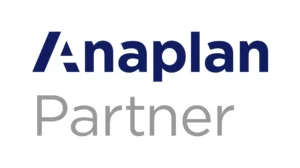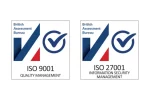The landscape of enterprise software is evolving. Organisations often face the dilemma of whether to retain or replace end-of-life (EOL) solutions. In the case of SAP Business Planning and Consolidation (BPC), it is a tool that has served many businesses well. But now has versions approaching the end of mainstream maintenance. Of course no versions have benefitted from any development in many years.
Businesses have many priorities and where resources to perform a migration or upgrade project are scarce there may need to be compromises – and while it is recognised that this could result in efficiency erosions this may need to be accepted by the business. Doing nothing, though, is as much of a decision as making a change.
This blog post explores the pros, cons, and key considerations for retaining an EOL solution like SAP BPC. So what can be done to ‘sweat the asset’, what are the risks and what are the benefits?
Pros of Retaining SAP BPC
Cost Savings: One of the most compelling reasons to retain an EOL solution is cost saving. Upgrading to a new system can be expensive. It involves not just the cost of the software itself but also the expenses related to implementation, training, and potential downtime. By sticking with SAP BPC, businesses can avoid or at least defer these immediate costs.
Familiarity and Stability: SAP BPC has been a reliable tool for many businesses. The familiarity with the system means that users and administrators are already trained and comfortable with it. There can be a significant learning curve and potential disruption that come with new software. A stable system that has been in use for years can be less prone to unexpected issues, compared to a newly implemented solution.
Customisation and Integration: Over time, users have likely invested significant effort in developing their BPC environments with reporting and potentially many applications that support their business. These, along with the integrations to potentially many source systems can be complex and costly to replicate in a new solution.
Cons of Retaining SAP BPC
Lack of Vendor Support: As SAP BPC versions come out of mainstream maintenance, the already near non existent level of support from SAP will continue to diminish. This will almost certainly lead to even more challenges in resolving issues, and ensuring compatibility with other systems. Extended maintenance options may be available (such as for the NW version). But they will come at a higher cost and with reduced support.
Security Risks: EOL software is more vulnerable to security threats as it no longer receives regular updates and patches from the vendor. This can expose business to potential data breaches and compliance issues, and our team has already witnessed customers coming under attack from both state sponsored and commercially focused ransomware attacks.
Technological Obsolescence: Technology evolves rapidly, and retaining an EOL solution can mean missing out on new features, improvements, and innovations that newer systems offer. This impacts the businesses ability to remain competitive and agile or to react to external events which as we have witnessed in recent years can dramatically affect every aspect of our operations.
Mitigation of the Risks
Support: as there is a growing scarcity of specialised BPC resources and even reduction in number of partners with any BPC resource it is going to be increasingly important to maintain relationships with a partner that you can trust. This may take the form of a formal support agreement with a company such as Kabeelah who retains expert technical capability specifically in BPC or just having a direct connection so resource can be acquired if needed.
Robust Backup and DR: with the heightened risks from reliance on increasingly outdated underlying technologies and the consequentially increased risks from both technical and malicious incidents, it will be critical to maintain a robust and appropriately configured backup and DR (Disaster Recovery) regime. Understanding the business need for recovery times and recovery points as well as the technical requirements for achieving a recovery will stand a business in good stead should an incident occur.
Considerations and Conclusion
Assess Current Needs: Before finalising any decision it would be logical to perform an assessment of current and future business needs. This includes evaluating whether the existing system continues to meet these needs effectively now, or if there are gaps that either an extension to the existing deployment or a new solution could fill.
Cost-Benefit Analysis: A cost-benefit analysis can confirm whether savings from retaining BPC outweigh the potential risks and costs associated with its limitations. This analysis should consider both direct costs (e.g., maintenance and other support fees, managing and maintain a potentially obsolescent platform) and indirect costs (e.g., potential security breaches, inefficiencies and inability to adopt new and best practice processes and automations as well as newer functionalities such as Machine Learning (ML) and AI).
Retaining an end-of-life solution is a complex decision that requires careful consideration of many factors. While there are potential benefits in terms of cost savings and stability, the risks related to security, support, and developing technological deficit cannot be ignored. By conducting a thorough assessment, performing a cost-benefit analysis, exploring alternatives, and planning for a potential transition, you can make an informed decision that aligns your goals and business needs.
For more information about BPC Roadmap, why not check out our next webinar on the 12th of September at: https://www.linkedin.com/events/bpcroadmap7221130269745913857/theater/



